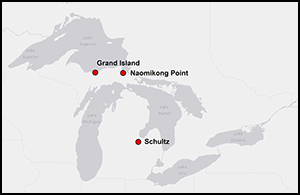Crossref Citations
This article has been cited by the following publications. This list is generated based on data provided by
Crossref.
Dorland, Steven G.H.
2018.
The touch of a child: An analysis of fingernail impressions on Late Woodland pottery to identify childhood material interactions.
Journal of Archaeological Science: Reports,
Vol. 21,
Issue. ,
p.
298.
Fanti, Laura
Drieu, Léa
Mazuy, Arnaud
Blasco, Thierry
Lugliè, Carlo
and
Regert, Martine
2018.
The role of pottery in Middle Neolithic societies of western Mediterranean (Sardinia, Italy, 4500-4000 cal BC) revealed through an integrated morphometric, use-wear, biomolecular and isotopic approach.
Journal of Archaeological Science,
Vol. 93,
Issue. ,
p.
110.
Roth, Barbara
Woods, Aaron
Romero, Danielle
McNeely, Malka
and
Malainey, Mary
2018.
Using residue analysis to explore household activities at the Harris Site, Mimbres Valley, New Mexico.
Journal of Archaeological Science: Reports,
Vol. 19,
Issue. ,
p.
270.
Taché, Karine
Bondetti, Manon
Lucquin, Alexandre
Admiraal, Marjolein
and
Craig, Oliver E.
2019.
Something fishy in the Great Lakes? A reappraisal of early pottery use in north-eastern North America.
Antiquity,
Vol. 93,
Issue. 371,
p.
1339.
Bowen, Kayla
and
Harry, Karen G.
2019.
Evaluating the Relationship between Ceramic Wall Thickness and Heating Effectiveness, Fuel Efficiency, and Thermal Shock Resistance.
Midcontinental Journal of Archaeology,
Vol. 44,
Issue. 3,
p.
259.
Bowen, Kayla
and
Harry, Karen G.
2019.
Evaluating the Relationship between Ceramic Wall Thickness and Heating Effectiveness, Fuel Efficiency, and Thermal Shock Resistance.
Midcontinental Journal of Archaeology,
Vol. 44,
Issue. 3,
p.
259.
Hanson, Kelsey E.
Bryant, Paula L.
Painter, Autumn M.
and
Skibo, James M.
2019.
Acorn Processing and Pottery Use in the Upper Great Lakes: An Experimental Comparison of Stone Boiling and Ceramic Technology.
Ethnoarchaeology,
Vol. 11,
Issue. 2,
p.
170.
Amzallag, Nissim
2021.
Technopoiesis—the Forgotten Dimension of Early Technique Development.
Philosophy & Technology,
Vol. 34,
Issue. 4,
p.
785.
Mika, Anna
Eren, Metin I.
Meindl, Richard S.
O’Brien, Michael J.
and
Bebber, Michelle R.
2023.
On the evolution of limestone-tempered pottery in the American Midwest: an experimental assessment of vessel weight and its relationship to other functional/mechanical properties.
STAR: Science & Technology of Archaeological Research,
Vol. 9,
Issue. 1,
Neubauer, Fernanda
2024.
Fire-Cracked Rock Analysis.
p.
1.
